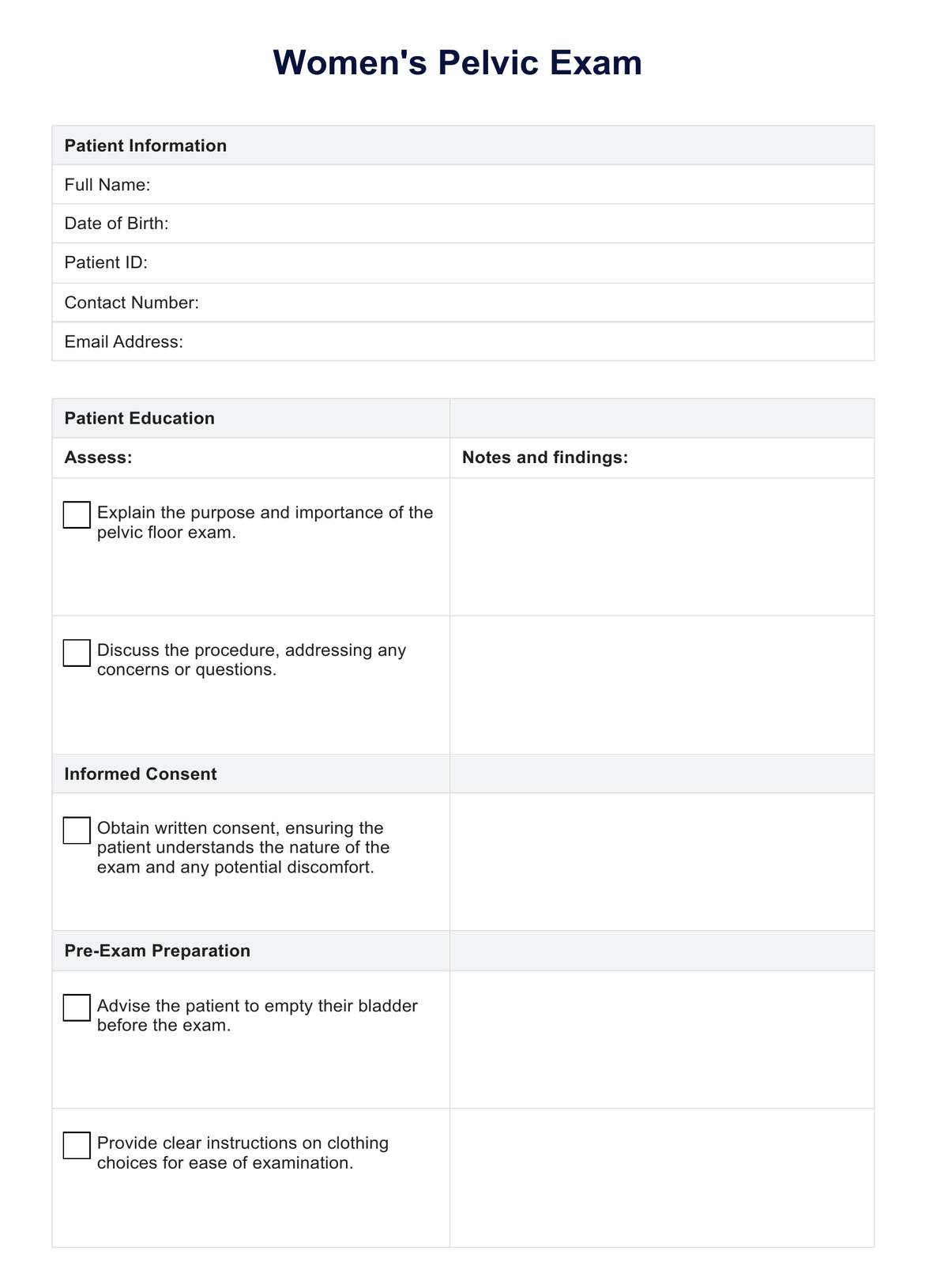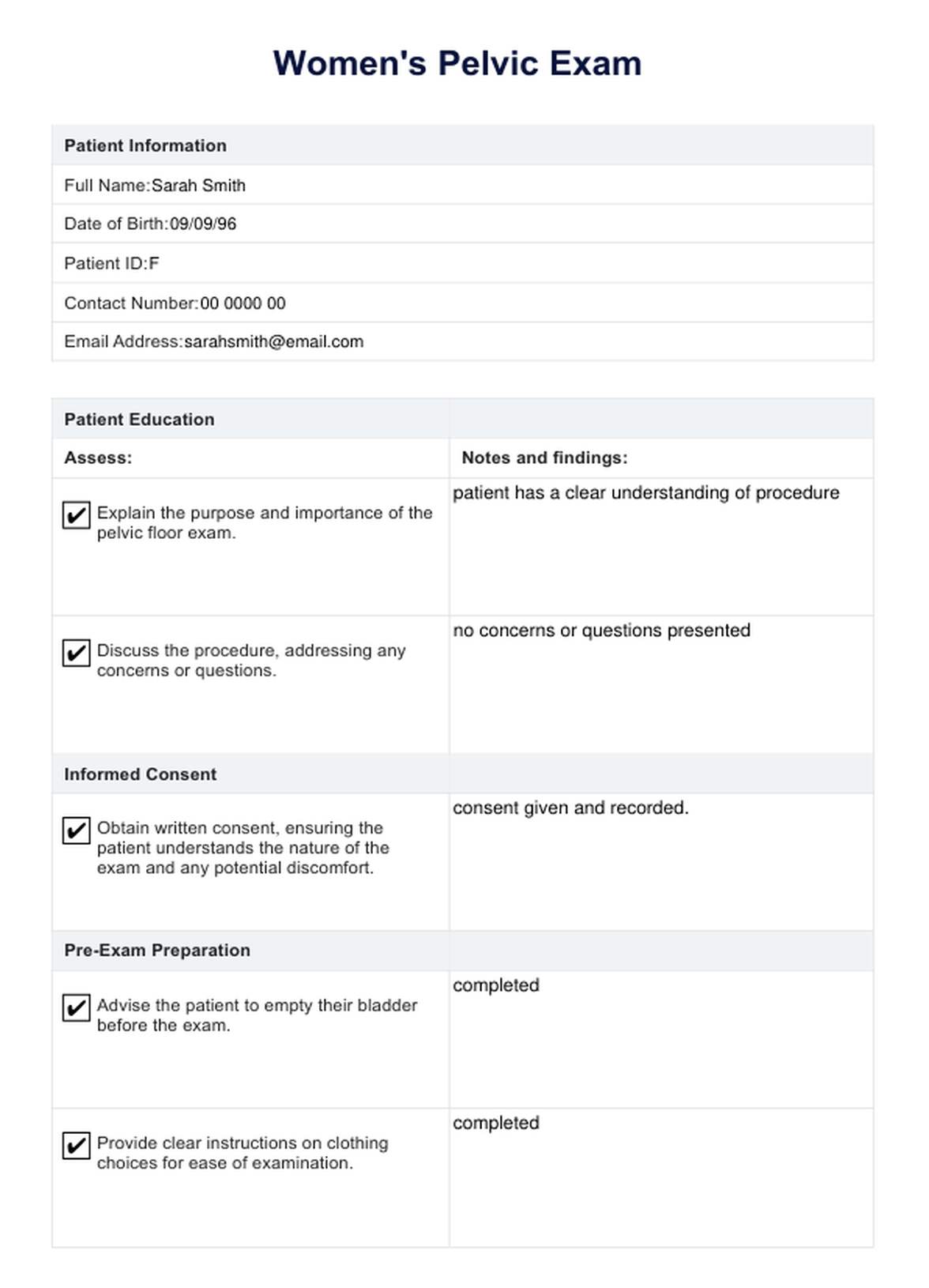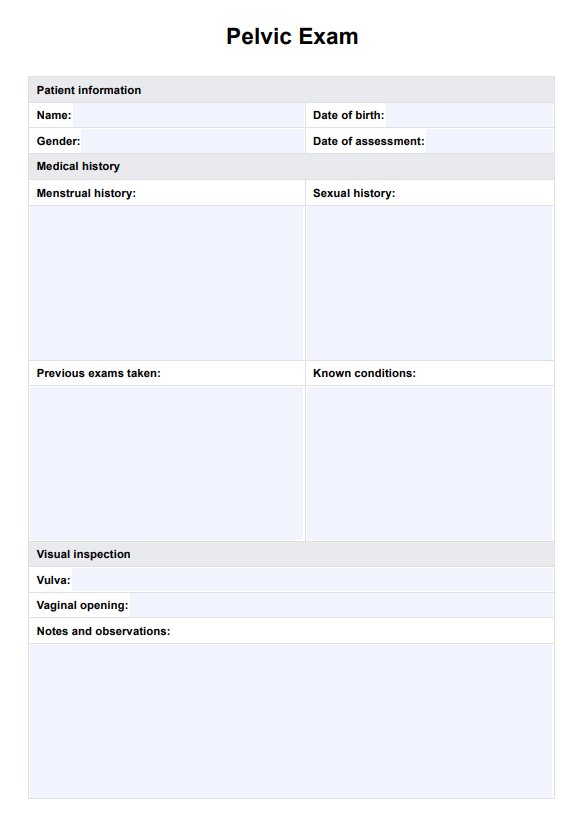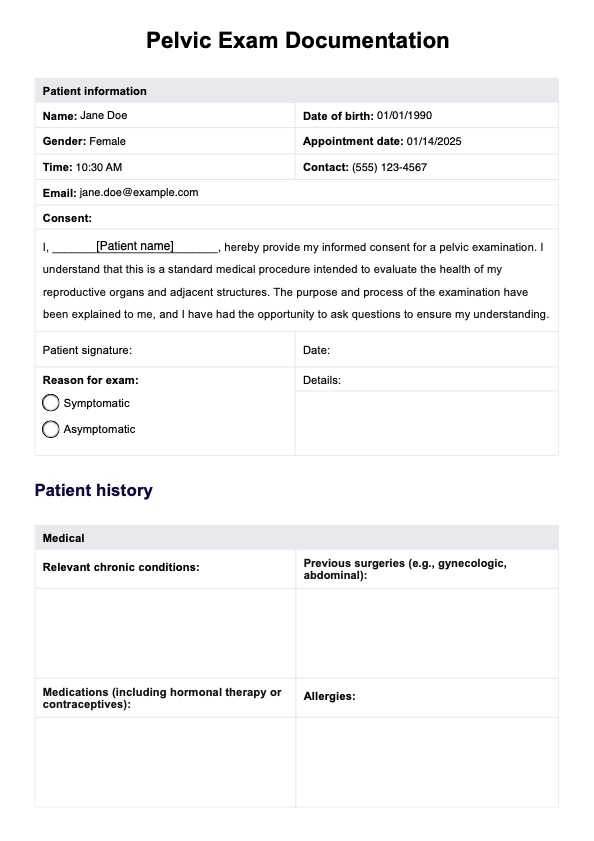Women's Pelvic Exam
Explore our comprehensive women's pelvic floor exam guide, covering procedures, preparation, and insights for optimal pelvic health and wellness.


What is a pelvic exam?
Pelvic exams are routine medical procedures designed to evaluate the health and functionality of a person's pelvic region, encompassing the reproductive and urinary systems. Typically conducted by healthcare providers such as gynecologists, these exams involve a comprehensive assessment of the pelvic floor muscles, organs, and surrounding structures.
During a pelvic exam, the patient lies on an examination table with their legs supported in stirrups, facilitating access to the pelvic region. The procedure begins with an external examination, where the healthcare provider inspects the genital area for any visible abnormalities, swelling, or signs of discomfort. Subsequently, an internal examination may be performed, involving the insertion of a gloved and lubricated finger into the vagina for women or the rectum for men. This internal assessment allows the healthcare provider to assess the strength, tone, and flexibility of the pelvic floor muscles while also checking for tenderness or pain.
Pelvic exams are integral components of gynecological care for women, providing insights into reproductive health, detecting abnormalities like cysts or fibroids, and contributing to the early detection of conditions such as cervical cancer. Additionally, these exams play a crucial role in diagnosing and addressing pelvic floor disorders, urinary incontinence, and other pelvic health concerns in both men and women. Clear communication between healthcare providers and patients ensures a comfortable and informed experience during pelvic examinations.
Women's Pelvic Exam Template
Women's Pelvic Exam Example
Why are pelvic exams important for women?
Pelvic exams are crucial for women's health as they serve multiple important purposes in preventive care, early detection of diseases, and the overall assessment of reproductive well-being. Here are key reasons why pelvic exams are important for women:
Screening for gynecological conditions
Pelvic exams are a fundamental component of routine gynecological check-ups, allowing healthcare providers to screen for conditions such as cervical cancer, ovarian cysts, uterine fibroids, and other abnormalities. Early detection facilitates timely intervention and improved treatment outcomes.
Cervical cancer screening
The pap smear or pap test, often conducted during a routine pelvic exam itself, is a primary tool for detecting cervical cancer or precancerous changes in the cervix. Regular screenings contribute significantly to the prevention and early diagnosis of cervical cancer.
Reproductive health assessment
Pelvic exams assess the health of reproductive organs, including the uterus, ovaries, and fallopian tubes. This is a pelvic exam procedure crucial for identifying issues such as infections, structural abnormalities, or conditions affecting fertility.
Detection of sexually transmitted infections (STIs)
Healthcare providers may use pelvic exams to check for signs of sexually transmitted infections. Early detection and treatment of STIs are essential for preventing complications and safeguarding reproductive health.
Assessment of pelvic floor health
Pelvic exams help evaluate the condition of pelvic floor muscles. This is important in identifying pelvic floor disorders, such as pelvic organ prolapse or urinary incontinence, and guiding appropriate interventions.
Management of menstrual irregularities
Women experiencing irregular menstrual cycles, abnormal bleeding, or other menstrual issues can benefit from pelvic exams. These exams help diagnose and manage conditions like polycystic ovary syndrome (PCOS) or endometriosis.
Health education and counseling
Pelvic exams provide opportunities for healthcare providers to offer health education and counseling on topics such as contraception, family planning, and general sexual and reproductive health. This supports informed decision-making and overall well-being.
Overall health monitoring
Pelvic exams are part of a comprehensive approach to monitoring overall health. Regular check-ups allow healthcare providers to assess various aspects of a woman's health and address any concerns or symptoms that may arise.
How does this exam work?
A pelvic exam is a medical procedure designed to assess the health and function of a person's pelvic organs and structures. The exam is typically conducted by a healthcare provider, such as a gynecologist or a healthcare professional trained in pelvic health.
Here's an overview of how the pelvic exam your doctor does typically works:
- Preparation: Before the exam, the patient is typically asked to change into a gown provided by the healthcare facility. It's often recommended to empty the bladder before the examination for comfort.
- Patient positioning: The patient lies on their back on an examination table with their feet placed in stirrups. This position allows the healthcare provider easy access to the pelvic region.
- External examination: The healthcare provider begins with an external examination of the genital area, checking for any visible abnormalities, redness, swelling, or signs of infection.
- Speculum insertion: For women, the next step involves the use of a speculum, a medical instrument that gently widens the vaginal canal, allowing the healthcare provider to visualize the cervix and vaginal walls. This part of the exam is usually painless, but some women may experience mild discomfort.
- Pap smear (if indicated): During the pelvic exam, the healthcare provider may perform a Pap smear, which involves collecting cells from the cervix to screen for abnormalities or early signs of cervical cancer.
- Bimanual examination: Using a gloved and lubricated finger, the healthcare provider performs a bimanual examination, where they gently insert one or two fingers into the vagina while pressing on the abdomen with the other hand. This helps assess the size, shape, and position of the pelvic organs, including the uterus and ovaries.
- Rectal exam (if indicated): In some cases, particularly for men or women with specific symptoms, a rectal examination may be performed to assess the pelvic floor muscles and rectal area.
- Assessment of pelvic floor muscles: The healthcare provider evaluates the strength, tone, and flexibility of the pelvic floor muscles, which play a crucial role in supporting pelvic organs and maintaining continence.
- Communication and education: Throughout the exam, the healthcare provider communicates with the patient, explaining each step and addressing any concerns. This is also an opportunity for education on reproductive health and any findings from the examination.
Benefits of using this exam template
Using a pelvic floor exam checklist template offers several benefits for healthcare providers and patients alike:
Comprehensive assessment
The checklist covers all essential elements of a typical pelvic exam, ensuring a thorough assessment of the pelvic floor muscles, external and internal structures, and other relevant factors. This comprehensive approach contributes to accurate diagnoses.
Efficiency and time management
A template helps streamline the examination process, making it more efficient. Healthcare providers can use the checklist to guide them through each step, reducing the risk of omitting important components and optimizing time management.
Improved communication
The checklist serves as a tool for clear communication between healthcare providers and patients. It ensures that patients are informed about the physical exam process, helping alleviate anxiety and promoting a positive patient experience.
Documentation accuracy
The doctor or nurse can use the checklist to document each aspect of the pelvic exam accurately. This documentation is valuable for medical records, ensuring that important details are recorded for future reference, monitoring, and follow-up care.
Quality assurance
Utilizing a checklist template contributes to quality assurance by promoting adherence to established guidelines and protocols. This is particularly important in maintaining a high standard of care and minimizing variations in exam procedures.
Using this pelvic floor exam template and pelvic exam template can strengthen your practice and enhance client outcomes.
Commonly asked questions
A pelvic floor exam is a medical procedure that assesses the health and function of the pelvic floor muscles and associated structures. It is performed to diagnose and address conditions such as pelvic organ prolapse, urinary incontinence, and pelvic pain disorders.
While some patients may experience mild discomfort, a pelvic floor exam is generally not painful. Clear communication with the healthcare provider is essential, and they can adjust their approach to ensure the patient's comfort during the examination.
The frequency of routine pelvic exams and floor exams varies based on individual health needs and risk factors. For women, regular pelvic exams are often part of routine gynecological check-ups. Individuals experiencing pelvic health symptoms or conditions may require more frequent assessments, as determined by their healthcare provider.














































































































